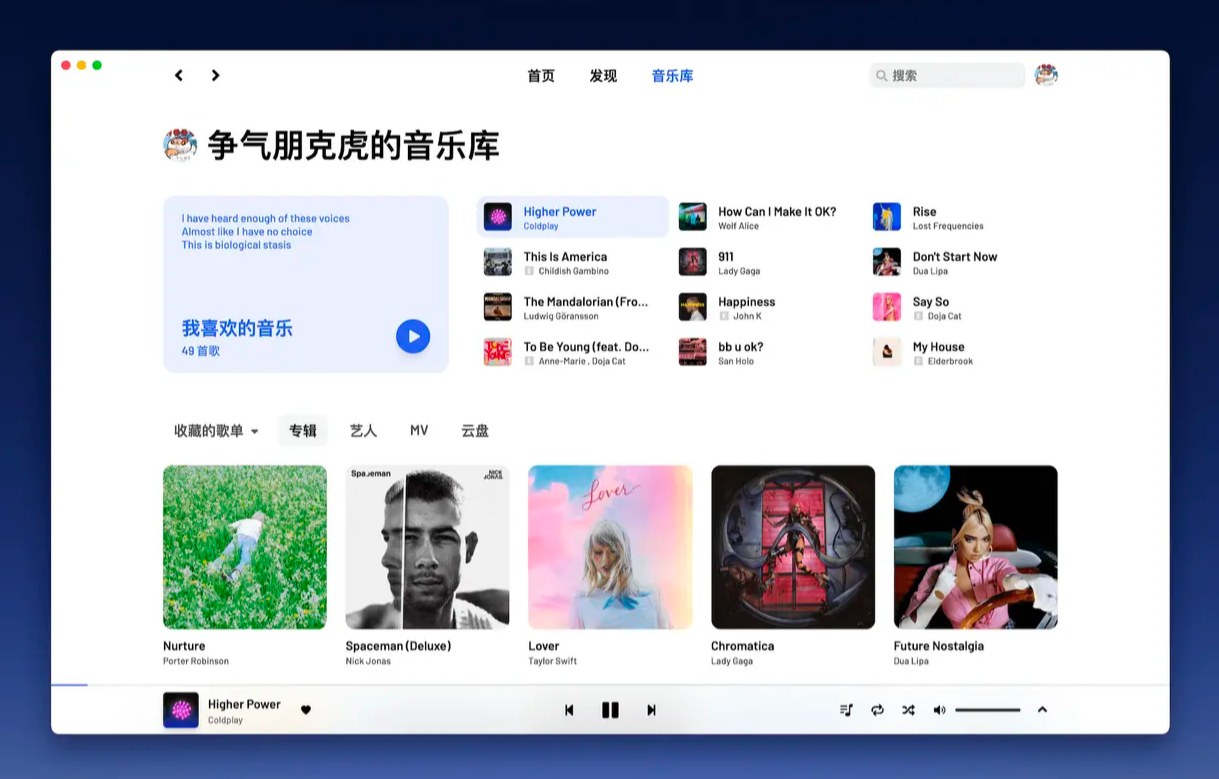This article mainly tells you about the detailed description of the powerful Vue.js components. Components are one of the most powerful functions of Vue.js. Interested friends can refer to it
What is a component: Components are one of the most powerful features of Vue.js. Components can extend HTML elements, encapsulating reusable code. At a high level, a component is a self-defined element to which Vue.js's compiler adds special functionality. In some cases, components can also be in the form of native HTML elements, extended with the is attribute.
How to register a component?
You need to use the Vue.ext
method to create a component, and then use the Vue.component method to register the component. The format of the Vue.extend method is as follows: var MyComponent = Vue.extend({
// 选项...后面再介绍
})If you want to use this created component elsewhere, you have to name the component:
Vue.component('my-component ', MyComponent)
After naming, you can use the component name in the
, just like using a DOM element. Let’s take a look at a complete component registration and usage example.
html code:
<p id="example"> <my-component></my-component> </p>
js code:
// 定义
var MyComponent = Vue.extend({
template: '<p>A custom component!</p>'
})
// 注册
Vue.component('my-component', MyComponent)
// 创建根实例
new Vue({
el: '#example'
})Output result:
<p id="example"> <p>A custom component!</p> </p
Nested components
The component itself can also contain components. The parent component below contains a component named child-component, but this component can only be used by the parent component: var child = Vue.extend({
template: '<p>A custom component!</p>'
});
var parent = Vue.extend({
template: '<p>Parent Component: <child-component></child-component></p>',
components: {
'child-component': child
}
});
Vue.component("parent-component", parent);The above definition process It's more cumbersome, and you don't need to call the Vue.component and Vue.extend methods every time:
// 在一个步骤中扩展与注册
Vue.component('my-component', {
template: '<p>A custom component!</p>'
})
// 局部注册也可以这么做
var Parent = Vue.extend({
components: {
'my-component': {
template: '<p>A custom component!</p>'
}
}
})
Dynamic components
More Two components can use the same mount point and then switch between them dynamically. Use the reserved
<p id="dynamic"> <button id="home">Home</button> <button id="posts">Posts</button> <button id="archive">Archive</button> <br> <component :is="currentView"></component> </p>
js code:
var vue = new Vue({
el:"#dynamic",
data: {
currentView: "home"
},
components: {
home:{
template: "Home"
},
posts: {
template: "Posts"
},
archive: {
template: "Archive"
}
}
});
document.getElementById("home").onclick = function(){
vue.currentView = "home";
};
document.getElementById("posts").onclick = function(){
vue.currentView = "posts";
};
document.getElementById("archive").onclick = function(){
vue.currentView = "archive";
};Component and v-
for
Cannot pass data to the component because the scope of the component is independent. In order to pass data to the component, props should be used:
:item="item"
:index="$ index">
The reason why item is not automatically injected into the component is that this will cause the component to be tightly coupled with the current v-for. Explicitly declaring where the data comes from allows components to be reused in
When a component binds data, how can the binding be effective and can be dynamically modified and added
? Take a look at the principle introduction below.
How to track changes: Pass a different
to the vue instance as the data option, vue.js will traverse its properties, using Object. defineProperty converts it to a getter/setter. This is an ES5 feature and all vue.js does not support IE8 or lower.
Each instruction/
in the template has a corresponding watcher object, which records the properties as dependencies during the calculation process. Later, when the dependent setter is called, the watcher will be triggered to recalculate. The process is as follows:

Change detection problem: vue.js cannot detect the addition or
, the attributes must be in data Only then can vue.js convert it to getter/settermode, and then there will be a response. For example: var data = { a: 1 };
var vm = new Vue({
data: data
});
// `vm.a` 和 `data.a` 现在是响应的
vm.b = 2
// `vm.b` 不是响应的
data.b = 2
// `data.b` 不是响应的 However, there is also a way to add properties after the instance is created and make it corresponding. You can use the set(
,value) instance method:
vm. set('b', 2)
对于普通对象可以使用全局方法:Vue.set(object, key, value):
Vue.set(data, 'c', 3)
// `vm.c` 和 `data.c` 现在是响应的
初始化数据:尽管Vue.js提供动态的添加相应属性,还是推荐在data对象上声明所有的相应属性。
不这么做:
var vm = new Vue({
template: '<p>{{msg}}</p>'
})
// 然后添加 `msg`
vm.$set('msg', 'Hello!')应该这么做:
var vm = new Vue({
data: {
// 以一个空值声明 `msg`
msg: ''
},
template: '<p>{{msg}}</p>'
})
// 然后设置 `msg`
vm.msg = 'Hello!'组件完整案例
下面介绍的例子实现了模态窗口功能,代码也比较简单。
html代码:
<!-- 实现script定义一个模板 --> <script type="x/template" id="modal-template"> <!--模板是否显示通过v-show="show"来设置, transition设置动画效果--> <p class="modal-mask" v-show="show" transition="modal"> <p class="modal-wrapper"> <p class="modal-container"> <p class="modal-header"> <!--slot 相当于header占位符--> <slot name="header"> default header </slot> </p> <p class="modal-body"> <!--slot 相当于body占位符--> <slot name="body"> default body </slot> </p> <p class="modal-footer"> <!--slot 相当于footer占位符--> <slot name="footer"> default footer </slot> <button class="modal-default-button" @click="show = false">OK</button> </p> </p> </p> </p> </script> <p id="app"> <!--点击按钮时设置vue实例特性showModal的值为true--> <button id="show-modal" @click="showModal = true">show modal</button> <!--modal是自定义的一个插件,插件的特性show绑定vue实例的showModal特性--> <modal :show.sync="showModal"> <!--替换modal插件中slot那么为header的内容--> <h3 id="Custom-nbsp-Header">Custom Header</h3> </modal> </p>
js代码:
//定义一个插件,名称为modal
Vue.component("modal", {
//插件的模板绑定id为modal-template的DOM元素内容
template: "#modal-template",
props: {
//特性,类型为布尔
show:{
type: Boolean,
required: true,
twoWay: true
}
}
});
//实例化vue,作用域在id为app元素下,
new Vue({
el: "#app",
data: {
//特性,默认值为false
showModal: false
}
});css代码:
.modal-mask {
position: fixed;
z-index: 9998;
top: 0;
left: 0;
width: 100%;
height: 100%;
background-color: rgba(0, 0, 0, .5);
display: table;
transition: opacity .3s ease;
}
.modal-wrapper {
display: table-cell;
vertical-align: middle;
}
.modal-container {
width: 300px;
margin: 0px auto;
padding: 20px 30px;
background-color: #fff;
border-radius: 2px;
box-shadow: 0 2px 8px rgba(0, 0, 0, .33);
transition: all .3s ease;
font-family: Helvetica, Arial, sans-serif;
}
.modal-header h3 {
margin-top: 0;
color: #42b983;
}
.modal-body {
margin: 20px 0;
}
.modal-default-button {
float: right;
}
/*
* the following styles are auto-applied to elements with
* v-transition="modal" when their visiblity is toggled
* by Vue.js.
*
* You can easily play with the modal transition by editing
* these styles.
*/
.modal-enter, .modal-leave {
opacity: 0;
}
.modal-enter .modal-container,
.modal-leave .modal-container {
-webkit-transform: scale(1.1);
transform: scale(1.1);
}相关文章:
The above is the detailed content of Detailed description of powerful Vue.js components. For more information, please follow other related articles on the PHP Chinese website!
 总结分享几个 VueUse 最佳组合,快来收藏使用吧!Jul 20, 2022 pm 08:40 PM
总结分享几个 VueUse 最佳组合,快来收藏使用吧!Jul 20, 2022 pm 08:40 PMVueUse 是 Anthony Fu 的一个开源项目,它为 Vue 开发人员提供了大量适用于 Vue 2 和 Vue 3 的基本 Composition API 实用程序函数。本篇文章就来给大家分享几个我常用的几个 VueUse 最佳组合,希望对大家有所帮助!
 聊聊Vue3+qrcodejs如何生成二维码并添加文字描述Aug 02, 2022 pm 09:19 PM
聊聊Vue3+qrcodejs如何生成二维码并添加文字描述Aug 02, 2022 pm 09:19 PMVue3如何更好地使用qrcodejs生成二维码并添加文字描述?下面本篇文章给大家介绍一下Vue3+qrcodejs生成二维码并添加文字描述,希望对大家有所帮助。
 Github 上 8 个不可错过的 Vue 项目,快来收藏!!Jun 17, 2022 am 10:37 AM
Github 上 8 个不可错过的 Vue 项目,快来收藏!!Jun 17, 2022 am 10:37 AM本篇文章给大家整理分享8个GitHub上很棒的的 Vue 项目,都是非常棒的项目,希望当中有您想要收藏的那一个。
 聊聊vue指令中的修饰符,常用事件修饰符总结May 09, 2022 am 11:07 AM
聊聊vue指令中的修饰符,常用事件修饰符总结May 09, 2022 am 11:07 AM本篇文章带大家聊聊vue指令中的修饰符,对比一下vue中的指令修饰符和dom事件中的event对象,介绍一下常用的事件修饰符,希望对大家有所帮助!
 如何使用VueRouter4.x?快速上手指南Jul 13, 2022 pm 08:11 PM
如何使用VueRouter4.x?快速上手指南Jul 13, 2022 pm 08:11 PM如何使用VueRouter4.x?下面本篇文章就来给大家分享快速上手教程,介绍一下10分钟快速上手VueRouter4.x的方法,希望对大家有所帮助!
 如何覆盖组件库样式?React和Vue项目的解决方法浅析May 16, 2022 am 11:15 AM
如何覆盖组件库样式?React和Vue项目的解决方法浅析May 16, 2022 am 11:15 AM如何覆盖组件库样式?下面本篇文章给大家介绍一下React和Vue项目中优雅地覆盖组件库样式的方法,希望对大家有所帮助!


Hot AI Tools

Undresser.AI Undress
AI-powered app for creating realistic nude photos

AI Clothes Remover
Online AI tool for removing clothes from photos.

Undress AI Tool
Undress images for free

Clothoff.io
AI clothes remover

AI Hentai Generator
Generate AI Hentai for free.

Hot Article

Hot Tools

EditPlus Chinese cracked version
Small size, syntax highlighting, does not support code prompt function

MantisBT
Mantis is an easy-to-deploy web-based defect tracking tool designed to aid in product defect tracking. It requires PHP, MySQL and a web server. Check out our demo and hosting services.

Safe Exam Browser
Safe Exam Browser is a secure browser environment for taking online exams securely. This software turns any computer into a secure workstation. It controls access to any utility and prevents students from using unauthorized resources.

Dreamweaver CS6
Visual web development tools

PhpStorm Mac version
The latest (2018.2.1) professional PHP integrated development tool









